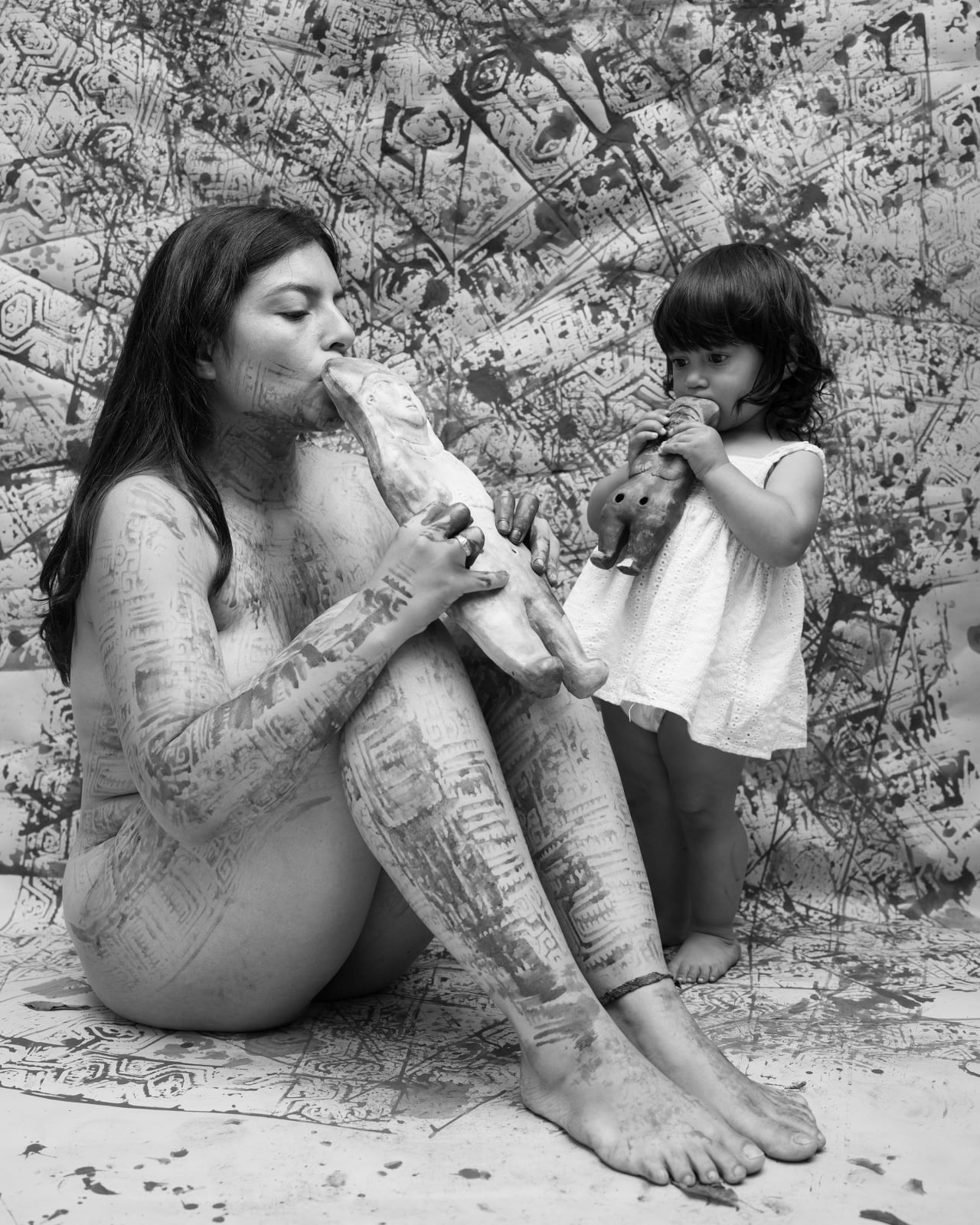Koyoltzintli American, b. 1983
Umiñas, 2024
Archival pigment print
39 x 33 in
99.1 x 83.8 cm
99.1 x 83.8 cm
Edition of 8 plus 1 artist's proof
Series: Adorned with Rattles
KMR046
At the tail end of the Neolithic period, when humans started to settle in territories, a culture in Abya Vala arose, and with them, the first anthropomorphic instrument. They created...
At the tail end of the Neolithic period, when humans started to settle in territories, a culture in Abya Vala arose, and with them, the first anthropomorphic instrument. They created a flute in the form of a woman, with digitation holes around her ovaries and a hole to blow air in her cranium exactly around her parietal lobe. It is presumed that the rites for women were plentiful and done often. There are so many flutes found with similar shapes more than any other representation of shaman, warrior, or scribe. The sound is bi-tonal with just a few hertz difference between each hole. This fraction of difference creates a sound akin to loud cicadas at night. They are so ancient that there is no record that the early missionaries ever saw them, but they do mention women rites, and their demonic, secretive ways. For approximately 1,500 years, these flutes were continuously made, and then they suddenly stopped. Were they hidden? Did the rites change? Was their use no longer needed? I learned how to make them. I am curious to solve this puzzle, but when I play them, they simply say, "Play me more and more often."

